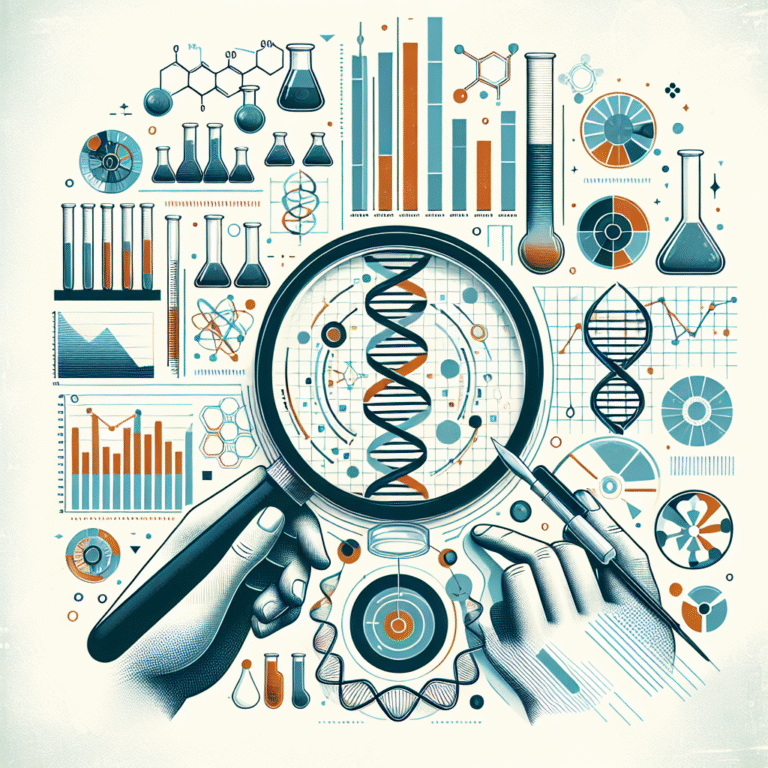
Introduction
Hypothesis testing is a fundamental aspect of statistical analysis, allowing us to make data-driven decisions across various disciplines. It’s not merely an academic exercise confined to textbooks; it’s an indispensable tool used in real-world situations—from healthcare and marketing to environmental science and technology. In this article, "Hypothesis Testing in Action: Real-World Applications Across Various Fields," we’ll explore how hypothesis testing serves as a critical framework for decision-making, stratifying complex uncertainties into manageable conclusions.
Imagine a world where organizations make decisions based solely on intuition, ignoring the treasure trove of data at their fingertips. Unthinkable, right? That’s where hypothesis testing comes in. It turns data into actionable insights, helping companies, researchers, and policymakers drive progress and innovation. So, let’s delve into the fascinating world of hypothesis testing and how it operates in various fields.
Understanding Hypothesis Testing
The Basics
Hypothesis testing is a method used to determine whether there is enough statistical evidence in a sample to infer that a certain condition holds for the entire population. This process typically involves:
- Formulating Hypotheses: The null hypothesis (H0) represents a default position, while the alternative hypothesis (H1 or Ha) suggests a possible effect or alternative.
- Selecting Significance Levels: Commonly set at 0.05, this alpha level dictates the threshold for rejecting the null hypothesis.
- Collecting Data: Gathering samples that ideally represent the larger population.
- Running Statistical Tests: Common tests include t-tests, chi-square tests, ANOVA, and regression analysis.
- Interpreting Results: Deciding whether to accept or reject the null hypothesis based on p-values and confidence intervals.
Real-World Applications
1. Healthcare: Clinical Trials
One of the most significant applications of hypothesis testing is in healthcare, particularly in clinical trials. When testing a new drug, researchers typically formulate a null hypothesis stating that the drug has no effect compared to a placebo.
Case Study: The Pfizer-BioNTech COVID-19 Vaccine
In 2020, Pfizer and BioNTech conducted a crucial clinical trial to evaluate the effectiveness of their COVID-19 vaccine. By employing hypothesis testing, they aimed to determine whether the vaccine led to a statistically significant reduction in COVID-19 cases compared to a control group.
Analysis:
- Null Hypothesis (H0): The vaccine has no effect on reducing COVID-19 incidence.
- Alternative Hypothesis (H1): The vaccine reduces COVID-19 incidence.
Using a significance level of 0.05, the trial demonstrated a p-value far below this threshold, leading the researchers to reject the null hypothesis. The vaccine was deemed effective, showcasing a prime example of "Hypothesis Testing in Action."
2. Marketing: A/B Testing
In marketing, hypothesis testing is applied through A/B testing (or split testing), where two versions of a website or advertisement are tested to see which one performs better among users.
Case Study: VWO’s A/B Test for an E-Commerce Site
A popular e-commerce site wanted to improve its conversion rates. They set up an A/B test to evaluate whether changing the color of their "Buy Now" button from green to red would yield better results.
Analysis:
- Null Hypothesis (H0): There is no difference in conversion rates between the green and red buttons.
- Alternative Hypothesis (H1): The red button increases conversion rates.
After running the test on a sample size of 10,000 visitors, the data reflected a 15% increase in conversions with the red button. This supports hypothesis testing as a powerful strategy in marketing, proving how small changes can lead to significant outcomes.
3. Environmental Science: Climate Change Research
Hypothesis testing plays a critical role in environmental science, where researchers often aim to understand human impact on climate change.
Case Study: CO2 Emission and Global Temperature
Researchers aimed to determine if the increase in atmospheric CO2 levels correlates with rising global temperatures.
Analysis:
- Null Hypothesis (H0): There is no correlation between CO2 levels and global temperatures.
- Alternative Hypothesis (H1): There is a positive correlation between CO2 levels and global temperatures.
Using historical data, statistical methods confirmed the correlation, allowing scientists to make informed predictions about future climate patterns. This application of hypothesis testing showcases its relevance to global environmental policies.
4. Education: Academic Performance Studies
In educational research, hypothesis testing is crucial to evaluating the effectiveness of teaching methods or curricula.
Case Study: Computer-Assisted Learning
A study was conducted to compare the effectiveness of traditional teaching methods versus computer-assisted learning (CAL) on student performance.
Analysis:
- Null Hypothesis (H0): There is no difference in academic performance between students taught with CAL and those taught traditionally.
- Alternative Hypothesis (H1): Students taught with CAL perform better academically.
The results, showing a highly significant increase in scores for the CAL group, underscored the potential of integrating technology into education.
5. Corporate Decision Making: Quality Control
In manufacturing and service industries, hypothesis testing helps to maintain quality assurance standards.
Case Study: Defect Rate in Automobile Manufacturing
An automobile manufacturer set out to determine if a new assembly line technique would lower the defect rate compared to the old method.
Analysis:
- Null Hypothesis (H0): The defect rate remains the same regardless of the assembly line technique.
- Alternative Hypothesis (H1): The new technique reduces the defect rate.
By analyzing defect rates across a robust sample, the study confirmed that the new technique led to a statistically significant reduction in defect rates, solidifying the role of hypothesis testing in quality control.
Summary of Findings
Hypothesis testing provides valuable insights across various fields. Through carefully structured case studies, we observe its dynamic applications:
| Field | Case Study Example | Outcome |
|---|---|---|
| Healthcare | Pfizer-BioNTech COVID-19 Vaccine Trial | Vaccine shown effective, H0 rejected |
| Marketing | A/B Testing of E-Commerce Button Color | Red button increased conversion rates significantly |
| Environmental | CO2 Emission and Global Temperature Relationship | Strong correlation confirmed, influencing policy-making |
| Education | Effectiveness of Computer-Assisted Learning | Improved academic performance with CAL |
| Corporate | Impact of New Assembly Line Technique on Defect Rate | Significant reduction in defects achieved |
Conclusion
Hypothesis testing is more than a theoretical concept; it is a robust, practical framework that empowers a diverse range of fields. As we’ve journeyed through real-world applications, it has become clear that the power of hypothesis testing lies in its systematic approach to making informed decisions.
By applying hypothesis testing, professionals can mitigate risks, make actionable strategies, and foster innovation. So, whether you are a healthcare researcher, marketer, educator, or corporate leader, embracing hypothesis testing can lead to significant advancements in your field.
Embrace the tools of hypothesis testing in action, and let data guide your path to success.
FAQs
1. What is the purpose of hypothesis testing?
Hypothesis testing aims to make informed decisions based on sample data to infer conclusions about a larger population.
2. What are the common types of statistical tests used?
Some common tests include t-tests, chi-square tests, ANOVA, and regression analysis, each tailored to specific types of data.
3. How do you determine the sample size for a hypothesis test?
Sample size can be determined based on the desired statistical power, effect size, and significance level; larger samples yield more reliable results.
4. What happens if the p-value is less than the significance level?
If the p-value is less than the significance level (α), you reject the null hypothesis, concluding that there is statistically significant evidence for the alternative hypothesis.
5. Can hypothesis testing be used in qualitative research?
Yes, hypothesis testing can also apply in qualitative research contexts, though typically it’s more common in quantitative studies.
Hypothesis Testing in Action: Real-World Applications Across Various Fields isn’t just a topic; it’s an avenue for inspiring progress and informed decision-making that drives our world forward.














